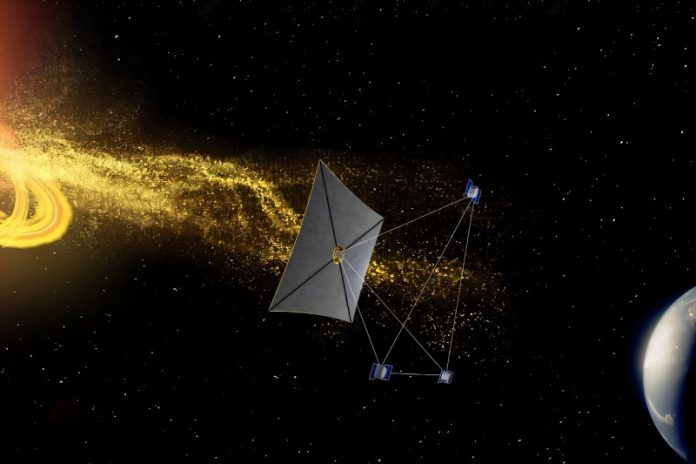
Scientists are calling for a new generation of spacecraft to help spot dangerous space weather before it reaches Earth.
According to a new study from the University of Michigan, tornado-like spirals of plasma, called flux ropes, can form in the solar wind as it streams from the sun.
These swirling structures can strengthen solar eruptions and potentially trigger geomagnetic storms that disrupt power grids, satellites, airplanes, and even farm equipment.
But with today’s single-point monitoring system, many of these space tornadoes go undetected until it’s too late.
The study, published in the Astrophysical Journal, used advanced computer simulations to model how massive eruptions from the sun interact with the solar wind.
These eruptions, known as coronal mass ejections, hurl huge clouds of hot plasma millions of miles across the solar system.
The simulations revealed that as these clouds plow through slower-moving solar wind, they can spin off flux ropes—vortex-like spirals of plasma and magnetic fields. Some fade quickly, but others persist long enough to threaten Earth.
“Our simulation shows that the magnetic field in these vortices can be strong enough to trigger a geomagnetic storm and cause real trouble,” said Chip Manchester, a research professor at the University of Michigan and lead author of the study.
Geomagnetic storms are serious business.
In May 2024, one such storm disrupted satellite orbits, forced airplanes to reroute, and even scrambled navigation systems used by farmers’ tractors, costing some farms tens of thousands of dollars.
The storms occur when magnetic fields in the solar wind collide with Earth’s own magnetic field, especially when the solar wind is strongly oriented southward.
Currently, spacecraft stationed at the L1 point between Earth and the sun provide early warnings by measuring the speed, density, and magnetic direction of the solar wind.
But this setup has a major weakness: it’s like monitoring a hurricane with a single weather station. If a solar eruption launches magnetic vortices aimed slightly off-center, today’s spacecraft might miss them entirely.
“Telescopes can show us an eruption leaving the sun, but if hazards form out in space between the sun and Earth, we can’t see them from that distance,” explained study co-author Mojtaba Akhavan-Tafti. “This is a matter of national security. We need to find these flux ropes earlier and know what they’ll look like when they reach Earth.”
To solve the problem, researchers propose a constellation of probes known as the Space Weather Investigation Frontier, or SWIFT. The system would include four spacecraft arranged in a pyramid-like formation. Three probes would orbit in a triangular pattern at L1, while a fourth “hub” spacecraft would sit farther out, closer to the sun. This hub would provide an earlier look at approaching space tornadoes, potentially speeding up warnings by 40 percent.
Placing that hub spacecraft beyond L1 would normally require an impractical amount of fuel to resist the pull of the sun’s gravity.
But thanks to technology developed by NASA’s Solar Cruiser mission, the probe could instead use a solar sail—an ultra-thin sheet of reflective material, about a third the size of a football field, that harnesses the momentum of sunlight itself.
This would allow the spacecraft to “sail” in space and hold position without burning fuel.
The researchers believe SWIFT could revolutionize space weather forecasting, giving electric grid operators, airlines, and satellite controllers the time they need to protect critical systems.
Just as multiple weather stations are essential for predicting storms on Earth, a fleet of spacecraft may be the only way to see the full picture of storms in space.



